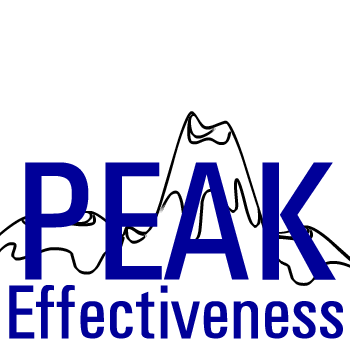






|
|
|
|
|
|
Get Engaged – At
Work and In Life!
Sell Along The Benefit Path
The benefit path goes from need to problem to solution to benefit. The primary duty of the seller is to make every effort to see the situation for the buyer's point to view, to put himself in the buyer's place and then to present the solution in terms of what the buyer wants. We need to interpret, translate and convert all of our solution facts into people benefits that satisfy the customers needs. See Why People Buy Your Product or Services for more on "needs". This can be done by using a formula of solution-advantage-benefit.
- Solution: What is it? How does it function?
- Advantage: For example, how does it solve the problem?
- Benefit: How does it help gain or maintain the satisfaction of needs.
Solution. The solution is what is normally presented, the features of the product or service. Describe each feature, one at a time, and go through the entire benefit path for each one, before going onto the next - solution - advantage - benefit, and say it is such a way the it automatically answers the two questions of what it is and how it functions. For example,
"An autoresponder is a relatively inexpensive piece of software which acts as a very intelligent robot in sending out email. An autoresponder is simply a program that runs through an email program that's designed to automatically respond to any email message sent to it with a pre-determined response or "canned message", usually a sales letter, to the email address of the person who originated the response."
Advantage. Then we move on to the advantage. It is an illustration or demonstration of the way the solution, or any feature of the solution, goes about attacking the cause and solving the problem. The best way to communicate the advantage is to give a specific "for example" illustration or demonstration of the way a problem is solved, will be solved, or has been solved for someone.
Advantages of autoresponders include:
- Customers can receive your information any time day or night, 24 hours a day, 365 days a year. It doesn't sleep, go to lunch, take breaks or vacations.
- No need for customers to wait for you to respond to them. They get the information within seconds.
- Even if your e-mail, computer or local telephone service is not working you can still provide information to your customers.
- Costs for such services are nowhere near the cost of a real secretary. They start as low as $2 a month, or in some cases, are even free.
- Have you heard about target marketing? Well, with autoresponders you get a very ultimate targeted mailing list!
- Autoresponders are great for your product or service testing. You can set your "click here" button to automatically display a given subject in the subject line to key your offers so that you know which ones are producing the best.
The advantage helps the customer understand and believe. It helps him discover the meaning the solution has for him.
Benefit. The benefit describes how the solution helps the customer gain or maintain satisfaction of needs. Remember the gain benefits include gaining rewards, pleasures, approvals, and satisfactions, while the maintain benefits include avoiding punishment, pain, disapprovals, and lost satisfactions.
We help our prospect understand and believe the gaining benefits of our solution when we show how it results in:
| the feelings that come with | helping him | helping him find | helping him become |
| gaining winning advancing receiving credit being a hero achieving accomplishing a goal receiving an honor winning a prize getting a bonus or promotion being more successful having a competitive edge enjoying the self-gratification of a job well done. |
improve increase progress earn return add strength opportunity be more efficient be more productive save time and money. |
fun excitement adventure comfort peace of mind contentment convenience ease luxury youth creativeness newness enjoyment amusement boldness uniqueness safety |
recognized endorsed esteemed popular praised admired appreciated accepted liked supported respected well thought of favored looked up to. |
We help him understand and believe the maintaining benefits of our product when we show how it results in:
| the feeling that comes with avoiding being | helping him avoid | ||
| rejected demoted corrected dismissed embarrassed blamed scolded a failure neglected disciplined humiliated chastised overlooked ostracized |
disliked run down degraded unpopular unknown unappreciated in disrepute disrespected unrecognized thought ill of condemned hated ignored. |
waste decreases returns forfeitures dissipation lost ground missed opportunities lapses regression deterioration retreats relapses loss inefficiency low productivity time lost ineffectiveness |
worry fear frustration pain anguish anxiety discomfort burdens dullness despair hurts difficulties misery despondency rudeness unsafeness |
We have a better chance of communicating the benefits and making the sale if we use plenty of gain and maintain benefits.
A good test of your presentation is to ask "so what?" after you mention each feature or advantage. Your presentation will not be as effective until you finish the last of the solution - advantage - benefit steps. Don't leave your customer guessing about what it will do for him! So, in the autoresponder example above, we need to finish the job, by stating a benefit for each of the advantages stated, such as:
"You have the peace of mind knowing that you can go a relaxing vacation with your business still running and your site visitors taken care of while you are gone. You don't need to worry about losing your hard earned reputation of caring for your customers."
Checking questions. In face to face sales, it is usually a good idea to ask what is known as a "checking question" after you have discussed the solution - advantage - benefit of each feature. The idea is to get the customer to participate, and to check whether he or she understand the benefit and to see if that benefit is of importance to the customer. A checking question would ask whether the customer likes the advantage and benefit, if he likes what the feature would do for him. For example, "Do you think you would appreciate the time saved by using the autoresponder and its sending out the responses to the requests for information automatically?"
On the internet, we don't have the opportunity to see how the customer is responding to our presentation of the solutions - advantages - benefits as we present them in the e-mail message or on our web site. We still can ask the question, however, which has the effect of the customer talking to himself, "yes, that would be nice" and helping him along towards clicking on that "Order Now" button.
In face to face sales, the rule is not to oversell, by telling our customer everything we know about the product, but only those things that are most important to the customer. Without the feedback of the face to face presentation, on the net we cannot be sure what is most important to our prospective customers. We can improve the accuracy of our sales efforts through participation in discussion groups, online forums, face to face discussions with potential customers, running surveys, asking questions via e-mail, etc. Finally, we can test multiple approaches to see what works best, and then roll the best out to a larger group.